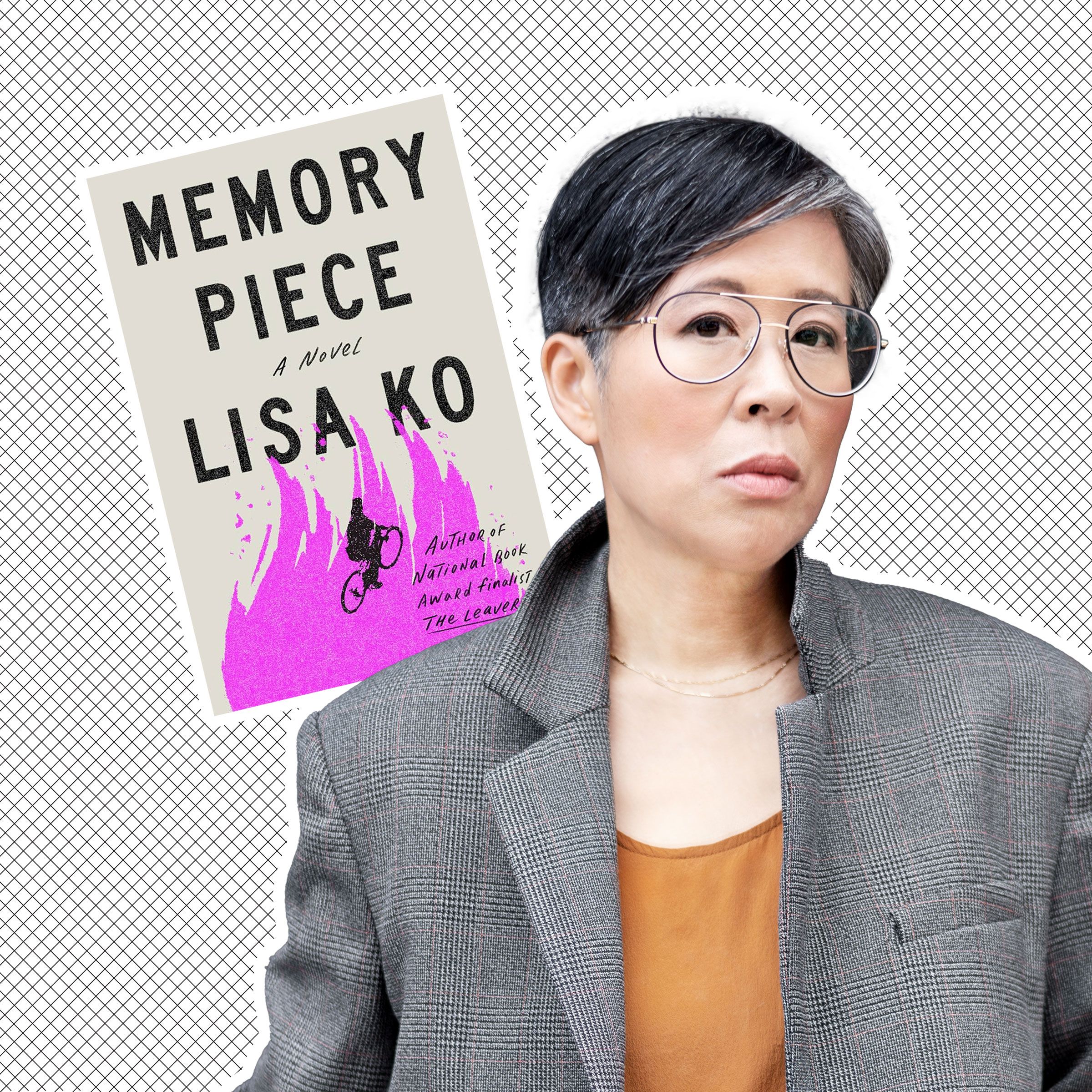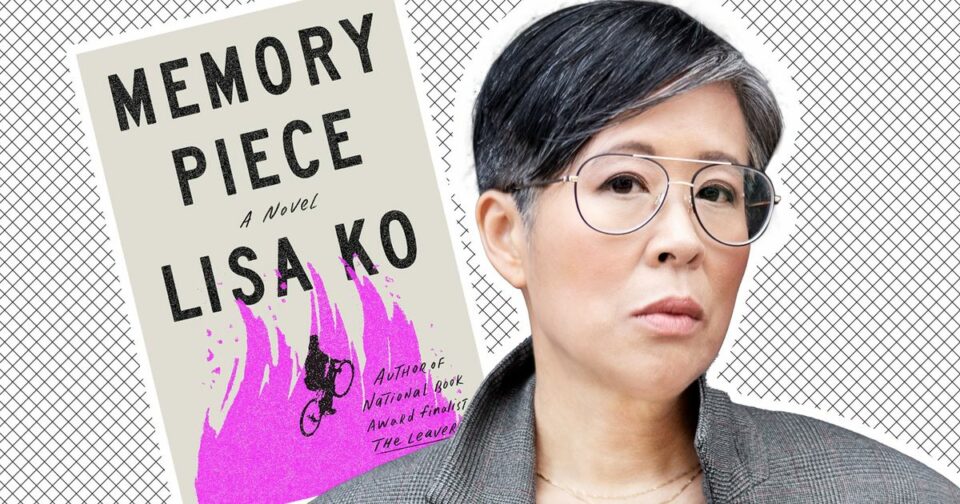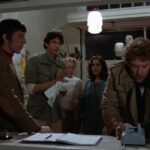
Lisa Ko’s new novel looks at a surprising transformation. One day you might be a listless preteen circling the potluck table at a mandatory Chinese family gathering, barely able to mutter anything to the other kids your drunk parents have forced you to mingle with. The next day, you’re an adult with agency and actual social skills, and so are those awkward party acquaintances. It’s bizarre. Maybe you respect them now; maybe you actually like each other.
Following her 2017 novel, The Leavers, Lisa Ko’s Memory Piece opens in suburban New Jersey in the 1980s, when threeChinese American girls — Giselle, Jackie, and Ellen — cross paths at a Fourth of July barbecue and soon become friends. As they grow up, they face their own challenges; they drift apart, then come back together. Giselle, a recalcitrant performance artist whose stunts include dwelling in an abandoned mall for a year, crosses over into elite art spaces. Jackie, a coder who watches her peers rake in money during the dot-com boom, wrestles with the choice between integrity and scale. And Ellen, a community activist living in communal housing, faces down a hostile, gentrifying city intent on pushing her out.
Ko took a trip down memory lane for the book, reminiscing about her own experiences hanging out in early microblogging spaces and attending Chinese camp in suburban New Jersey. “I actually don’t remember much, except that we had to get up every morning and do calisthenics and there was a woman yelling at us in Mandarin over a bullhorn,” she says. “I didn’t even understand Mandarin. It was so stressful.”
I’d love to know about the genesis of Memory Piece. Why did you choose to focus on the theme of friendship across generations?
It took me about seven years to write this from beginning to end. I was thinking a lot about obligations around family and finances, how those things can affect your ability to make art. It made me reminisce on periods of unfettered childhood creativity before anyone even knew what a career was. I started writing about these Asian American art weirdos who reminded me of childhood collaborators, where you’re really different but you have these shared experiences that end up influencing your life in ways you don’t even realize.
Did specific events in your life prompt these questions?
I’ve always been trying to justify art-making in a way with parents who work seven days a week. Performance artist Tehching Hsieh was a big influence on the novel, especially on the character of Giselle Chin. He does all these different pieces where he lives in a cage for a year or punches a time card every hour for a year. He was able to do this by choice because he didn’t have any other kind of family obligation. So Giselle lives in a hidden room in a mall for a year. It’s solving her problem in terms of needing money to live but also time to make art and the tension of wanting recognition but not wanting to be beholden to art funders.
Hsieh has some quote like “Whatever you do, life is nothing but consuming time until you die.” To me, there’s a question about what is a valuable way to use our time, and by making the passage of time itself the art, it’s like oh, well, the act of living itself can be valuable enough.
Tell me a bit more about your upbringing. Did you always know you wanted to become an artist?
I grew up as a bored and lonely only child. My parents and I had a business that was using the wood from my father’s second job as a Tae Kwon Do teacher and making crafts out of it and selling them at flea markets on weekends. They were a riff on like ’80s country crafts — these wooden teakettles that would say like “Mom’s Kitchen.”
I spent a lot of time making up stories about fake people just to populate my home. I never really thought about it as fiction. I’ve always had day jobs — everything from copyediting to making websites. I went to library school, so I worked for a time at archives. I don’t even think it was until after the publication of The Leavers when I was like, Okay, yeah, I guess I’m an author.
A large chunk of this book takes place at the turn of the millennium. What made you want to revisit that time?
I moved to New York City in the late ’90s. I was working in the early dot-com industry like my character Jackie. It felt like a time that was ripe for fiction because there was this moment of tech idealism that seems ridiculous in retrospect. And I was thinking back to the creativity and self-identity formation through those early internet websites before the division between real life and online life completely collapsed.
What were you doing in the dot-com industry?
I worked for a print magazine about the internet called Yahoo! Internet Life. And then I reviewed websites for other websites.
I need to know more about that …
Back then, there was no algorithm, no social media. There would be online publications that would have lists of other websites. And then writers like me would search out those websites and write about them.
Another job I had was writing online descriptions of venues — everything, like restaurants, museums, music venues — pre-Yelp. We had to do as many as we could in an hour, and we’d get paid by the amount we could do. We would be writing about cities we had never gone to, like Grand Rapids. I feel like it was for AOL.
What websites were you trawling in your free time back then?
The one thing that really excited me was all these online journals that were out there. It felt like this voyeuristic thing that reminded me of creating these fictional characters as a young person. One of the first ones I ever saw, maybe in 1996 or 1997, was the personal website of a Japanese American woman named Kat who lived in Hawaii. She was a college student. There was something very pleasurable about checking up on her, like, What did she do today? But later on, we found out she was actually fake and, like, this guy was catfishing.
I assume you also had an online diary.
I did. I had a website called Incommunicado.net. I remember writing a lot of pretentious entries about living in New York City and gazing at the skyline from my rooftop and walking home from bars and stuff.
I remember there was this website called Pitas.com, which was a precursor to Blogger or something. You could create sites where you would detail parts of your day. That sort of ritualistic logging has always appealed to me. So I remember having a site that was what I wore every day and then another one that was what albums I was listening to.
Music features regularly in Memory Piece — the characters date DJs, star in music videos, fiddle with the radio. Which artists were you thinking about when writing it?
The book takes place in the ’90s, so I put together a few Spotify playlists based on mixtapes I created back then. Like this one — these are a bunch of artists mentioned in the book, like Teresa Teng, who my characters’ parents grew up listening to; there’s some freestyle like Noel, which was very big in New Jersey in the ’80s; and then some of my own personal favorite tracks, including “Technova,” by Towa Tei, who is from Deee-Lite.
How were you discovering music back then?
Listening to the radio and then word of mouth, reading magazines, seeking out alternative radio stations. WDRE was the one on Long Island. And then WFMU was like a local college station. Going to record stores was definitely a big part of my childhood.
A couple of books published in the past few years have ’90s music woven into their narratives — I’m thinking of Hua Hsu’s Stay True and Elif Batuman’s Either/Or. Were there any that you referred to when trying to capture that cultural moment?
I don’t know about the references question, but in terms of the format, some books that were impactful included Rachel Kushner’s The Flamethrowers, sort of around art and political movements and New York, and Dana Spiotta’s Innocents and Others, about these two childhood collaborators making films. I also really loved After Kathy Acker, by Chris Kraus, which is sort of like an unconventional artists’ biography. They’re just examples of writing about women who were art monsters and obsessed with their work.
What have you been listening to recently?
I recently got a driver’s license and have learned to love driving. Just earlier today, I listened to a song I like to listen to alone in the car, which is “Mogwai Fear Satan” — it’s like a 15-minute math rock–y ’90s instrumental that dissociates me and puts me in that place of calm vigilance that I need to drive in the city. Sometimes on a road trip, I’ll listen to my 150-song karaoke playlist, gems from REO Speedwagon and Air Supply.
You started off this conversation talking about Asian American art weirdos. You were referring to your characters, but are there any Asian American art weirdos you’ve been influenced by that you want to shout out?
I don’t know if they would call themself an Asian American art weirdo, but I really loved I Thought You Loved Me, by MariNaomi. It’s like a graphic memoir that explores a friendship breakup and the unrivaled unreliability of memory. I just love the creativity with form; it blends their actual journal excerpts and letters with collages and different art forms. And it’s very melancholy but also slick and insightful.
This interview has been edited and condensed for clarity.
By Cat Zhang , 2024-03-27 16:00:16
Source link


